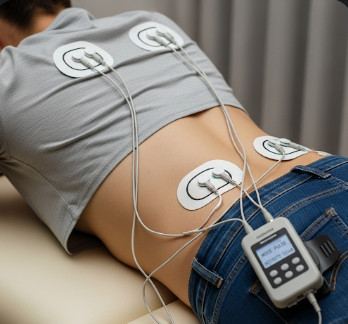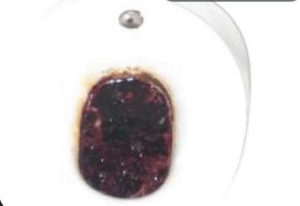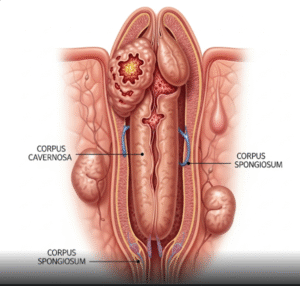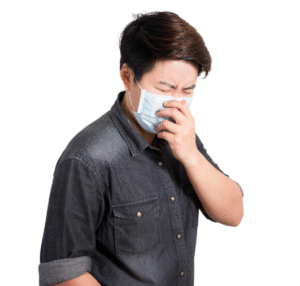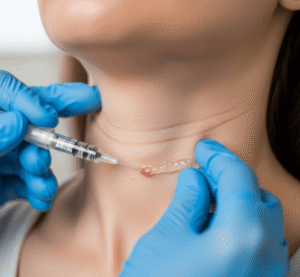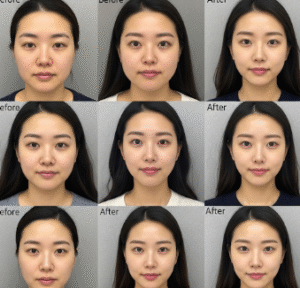What it is
TENS (Transcutaneous Electrical Nerve Stimulation) is a non-invasive pain management therapy that uses low-voltage electrical currents delivered through electrodes placed on the skin to relieve acute or chronic pain.
➡ Key facts:
- ✔ Electrodes are placed on the skin over or near the painful area
- ✔ Electrical impulses stimulate nerve fibers, which may block pain signals to the brain and trigger endorphin release
- ✔ TENS is used for a variety of conditions, including back pain, arthritis, post-surgical pain, neuropathic pain, and sports injuries
- ✔ In Korea, TENS therapy is available in physiotherapy clinics, rehabilitation centers, hospitals, and specialized pain management facilities
💡 TENS is a safe, drug-free therapy that can be used alone or alongside other medical treatments.
Why it’s done
TENS therapy is used for:
➤ Pain relief → Chronic pain (arthritis, neuropathy) or acute pain (injury, post-surgery)
➤ Non-pharmacological management → Reduces reliance on pain medications such as opioids or NSAIDs
➤ Muscle stimulation → Helps relax muscle spasms and improve circulation
➤ Adjunct therapy → Enhances effectiveness of physiotherapy or rehabilitation programs
⚠ TENS does not cure the underlying condition, but it effectively manages symptoms and improves quality of life.
Alternatives / Complementary Measures
Other approaches for pain relief include:
✔ Medication therapy → Analgesics, anti-inflammatories, or neuropathic pain drugs
✔ Physical therapy → Exercises, stretches, and posture correction
✔ Acupuncture → Needle stimulation of pressure points
✔ Heat or cold therapy → Reduces muscle tension and inflammation
✔ Interventional pain management → Injections, nerve blocks, or minimally invasive procedures
⚠ TENS is often used in combination with these therapies for comprehensive pain management.
Preparation
Before using TENS in Korea:
🔹 Medical evaluation → Assess pain type, duration, and underlying conditions
🔹 Skin assessment → Ensure no open wounds, infections, or allergies at electrode sites
🔹 Contraindication check → Avoid if patient has pacemaker, epilepsy, or severe heart conditions
🔹 Clothing and electrode placement → Skin must be clean and dry for proper adhesion
💡 Korean physiotherapists provide personalized consultation and electrode placement guidance for safe and effective use.
How it’s done
➡ Step-by-step TENS procedure:
- Electrode placement → Sticky pads placed on or near painful area
- Device settings → Frequency, intensity, and pulse duration adjusted based on patient comfort
- Therapy session → 20–60 minutes depending on condition and tolerance
- Monitoring → Physiotherapist observes patient response and adjusts settings as needed
💡 TENS is non-invasive and painless, though patients may feel a mild tingling or buzzing sensation.
Effectiveness & Success Rate
✔ Varies by condition:
- Chronic lower back pain → Significant reduction in pain intensity
- Arthritis → Short-term pain relief and improved mobility
- Postoperative or injury-related pain → Effective as an adjunct therapy
✔ Patient satisfaction → High due to minimal side effects and non-drug approach
✔ Long-term management → Requires multiple sessions or home-based TENS devices for sustained relief
💡 Korean clinics often provide TENS as part of integrated rehabilitation programs for maximum effectiveness.
Recovery / Expected Outcomes
✔ Immediate effects → Pain relief may occur during or shortly after the session
✔ Short-term outcomes → Reduced muscle tension, improved range of motion, and decreased reliance on pain medications
✔ Activity resumption → Most patients continue daily activities immediately after therapy
✔ Follow-up → Multiple sessions recommended, depending on severity and chronicity of pain
💡 TENS allows patients to manage pain while continuing normal rehabilitation or daily routines.
Complications / Risks
⚠ TENS is generally safe, but potential risks include:
➡ Skin irritation: Redness, itching, or rash at electrode site
➡ Muscle twitching: Mild, temporary discomfort
➡ Contraindication risks: Improper use can interfere with pacemakers or exacerbate heart conditions
➡ Overuse: Excessive intensity may cause temporary numbness or tingling
💡 Korean physiotherapists carefully monitor settings and placement to minimize these risks.
Treatment Options in Korea (Post-TENS Care)
🔹 Home-based TENS devices → For chronic pain management with guidance
🔹 Physiotherapy integration → Combines TENS with exercise, manual therapy, and stretching
🔹 Patient education → Instructions on safe duration, frequency, and electrode care
🔹 Follow-up sessions → Adjust therapy based on progress and pain relief
🔹 Complementary approaches → Heat/cold therapy, acupuncture, or medication as needed
💡 Korean centers emphasize personalized care and ongoing evaluation for optimal outcomes.
Top Hospitals & Clinics in Korea for TENS Therapy
🏥 Seoul National University Hospital (SNUH) – Pain management and rehabilitation programs
🏥 Asan Medical Center (Seoul) – Advanced physiotherapy and TENS integration
🏥 Samsung Medical Center (Seoul) – Specialized neuromuscular and chronic pain clinics
🏥 Private physiotherapy and rehabilitation centers – Widespread availability of TENS therapy nationwide
🏥 Community health centers – Access to supervised home-use devices and guidance
Conclusion
TENS therapy in Korea is a safe, effective, and non-invasive method for managing pain from various conditions.
✔ Provides drug-free pain relief for chronic and acute pain
✔ Minimal side effects, mainly mild tingling or skin irritation
✔ Can be used alongside physiotherapy and other interventions for optimal recovery
✔ Widely available in hospitals, clinics, and rehabilitation centers across Korea
By offering personalized TENS therapy integrated with comprehensive pain management, Korea ensures patients can reduce pain, improve function, and enhance quality of life safely.

